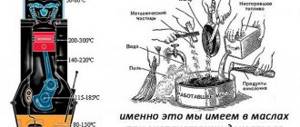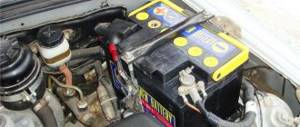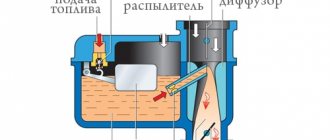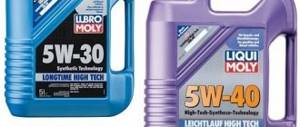What is the most economical way to heat a garage? And what is better to use for this: electricity, solid fuel? Let's look at it in this article!
Anyone who owns a car has probably encountered repairs during the cold season. Working in a cold, unheated garage is the worst prospect. Therefore, the installation of its heating system must be planned in advance. Boxes with a centralized heating system are rare. These are found only in indoor indoor parking lots, as well as in private houses, where it is part of the living space.
Heating a garage: the most economical way
Preparing the premises
Before installing the heating system, the garage is first prepared. To do this you will need:
- Install thermal insulation. The cheapest option is insulation with facade foam. But it is better to use mineral wool boards (non-flammable material, does not contribute to the spread of open fire). It should be installed from the outside, covering the insulation with decorative finishing (siding, lining, wood paneling). The roof should not be overlooked; it can also be insulated using basalt slabs or a layer of sawdust (closed in a wood or metal box to minimize the likelihood of fire).
Installation of thermal insulation will reduce heat loss by up to 60%. Fuel (or electricity) consumption will decrease similarly - Install the ventilation system. Even heating with electricity without normal air exchange will lead to the accumulation of fumes and carbon dioxide. Inhaling them for 2 - 3 minutes will inevitably lead to loss of consciousness.
- Prepare a place for installing a heating device. This should be an area of at least 1 by 1 meter, where there will be no flammable materials nearby.
- Install high-quality gates and doors. The main thing is to minimize possible heat loss. The garage is not heated regularly; heating is most often required “urgently” (as soon as possible).
- Install a fire safety system. Even smoke detectors are enough. But they will have to be temporarily turned off when the car warms up. The ideal option is an autonomous fire extinguishing system.
And after following the above recommendations, it makes sense to start arranging heating.
The simplest scheme for arranging natural ventilation. Corrugated aluminum pipes can be used as air ducts to save money.
Should you heat your garage - pros and cons?
If a car garage is located in a house, it usually serves additional functions.
The air temperature there is usually 5-8 degrees Celsius. A positive temperature is always maintained when water is supplied to the room, and there is no desire to shut off the water supply in winter. For economic reasons, it is suggested that during the heating season the temperature in the garage should not exceed 8 °C. If the car garage is supplied with central heating from the house, the radiator must have a thermostat. Heating a car garage does not always require installing a heater connected to the general house system; there are other options that have economic advantages.
Advantages and disadvantages
Garage heating has supporters and opponents.
Minuses:
- it is said that the high temperature in a heated garage contributes to the corrosion of steel caused by the salt that is sprinkled on the road in winter and which then accumulates in various parts of the car;
- heating increases the cost of construction - it is necessary to install heating equipment;
- The energy (fuel) required for heating is not cheap.
From this we can conclude that heating a garage does not make sense if it is just a parking space.
On the other hand, heating has a number of advantages:
- It’s more pleasant to get into a warm car without wasting time and effort on clearing snow and ice;
- the garage often serves not only as a covered parking lot, but also as a storage place for drinks and chemicals that cannot be stored at subzero temperatures;
- Many people use a car garage as a workshop.
In these cases, it is advisable that the car space be heated.
The least convincing reason for heating is concern for the durability of the car. It is not very useful for a car if it is frozen and defrosted daily in winter with salt, which is sprayed on ice and roadside snow. Although modern cars are better protected against corrosion, the body is made of thinner sheet metal than before. A warm garage can cause more damage by accelerating body corrosion.
Photo 1. This car garage is not heated, but will protect car owners in winter from the troubles associated with scraping ice and removing snow.
Photo 2. The owners of this garage decided to heat the room and installed a heater. They may have added heating for fear of freezing the water supply.
Economical heating
Most people decide to heat the garage attached to the house, explaining the decision by saying that it will be warmer in the house (photo 3). This is reasonable. But such benefits come at a high price. It's difficult to heat a 2 car garage where the door opens 4 times a day. It is better when there are two gates in a large garage (photo 4), but even with them there will be no significant qualitative changes in heat retention.
Photo 3. A heated double large garage is not a rational solution; in severe frosts, it is intensively cooled several times a day when the large gate is opened.
Photo 4. It makes more sense to make 2 entrances in a large garage; When each car enters or exits, only half of the “wall” opens.
Even if the garage is closed, one wall or gate is several times less thermally insulated than the rest, so heat loss is large, even if the gate has high thermal insulation parameters. It turns out that heating a large garage next to the house is expensive and difficult.
For owners of a heated garage, in addition to installing a heater, it is important to insulate the walls adjacent to the rest of the house and the ceiling if there are living spaces on top (Fig. 1).
Fig.1. To economically heat a garage in winter, it is necessary to additionally insulate the internal wall and ceiling with polystyrene foam. The exterior walls of the garage are insulated like the rest of the house.
Due to the temperature difference between the cold garage and the heated rooms of the house, the walls and ceiling need to be insulated. This will reduce heat loss from the heated room. Thermal insulation should be installed on the cold side of the partition - on the garage side. If the garage is not heated, the partitions need to be insulated. The heat loss coefficient U must reach the value:
- for walls – no more than 0.30,
- for the ceiling – 0.25 W/(m².K).
Even if the garage is heated, the temperature difference on both sides of the partition separating it from the heated rooms exceeds 8 °C. Thus, the wall and ceiling must have a heat loss coefficient U (max) = 1 W/(m².K). The thickness of the insulation layer applied to them usually does not exceed 10 cm.
The car garage will never be warm (photo 5) like other rooms of the house, between which there is no additional insulation.
Photo 5. A small gap along the gate is enough for the heated garage to begin to cool quickly.
Helpful advice. It's not always a good idea to heat your garage. To keep the house warm, it is enough to insulate the walls with insulation, separating them from the rest of the house, as well as the ceiling if the living area is located above the garage. The insulation does not need to be as extensive as on other exterior walls of the house. An always unheated car room will be a buffer for parts of the house in contact with it, in which not only will the temperature be higher than outside, but the inside also does not have access to the wind that cools the facade.
It is advisable to insulate the gate. Thermal insulation will be required to protect the inner surface of the door leaf from frost.
Electric heating
Electric heating is a simple and effective option. Does not require arrangement of a water circuit. But electricity must be supplied to the garage (in cooperatives and private houses there are no problems with this, but if the box is located in the courtyard of an apartment building and initially there is no power supplied to it, then there will be problems with this).
Fan heaters
A household fan heater is a device consisting of a heater and a fan that blows out heated air. There are two types:
- With a spiral as a heating element. Such fan heaters are cheaper, less reliable, and burn oxygen. Their operation requires normal ventilation and air exchange. The average cost is from 600 rubles.
- With ceramic heater. A modernized version of the previous ones, they do not burn oxygen, are durable, and do not heat up to the point of incandescence (therefore, the ignition of flammable materials is unlikely). But they are more expensive and their efficiency is lower than that of fan heaters with a spiral as a heating element (by 10 - 20%). The average cost is from 800 rubles.
A fan heater is an electric heater with a fan that blows out heated air and thus cools the heating element.
There are models with remote control, automatic thermostat, power regulator. Which fan heater is suitable for heating? You should focus only on power consumption. The optimal option is from 2000 Wh. This is capable of raising the temperature by 5 - 8 degrees in a box with an area of 15 - 20 m² within 30 minutes after switching on.
Ceramic heaters are 10 - 20% more expensive than those that use a spiral as a heating element. But they are better for boxing, that’s why they are preferred
Infrared heaters
Infrared heaters are no less efficient than fan heaters, but consume much less electricity. Their difference is that they do not heat the air, but only emit infrared rays, which heat the surface they hit. The average price of an 800 W heater (optimal performance, it makes no sense to buy with less power) is 2800 rubles and more.
Prices for fan heaters
fan heater
But infrared heaters have a drawback: the radiation they emit has a negative effect on the car's lacquer finish. When turning on such heating, the vehicle will have to be covered with a cover or reflector, but then how to carry out maintenance? So, although such heating is economical, it is not practical.
Infrared heater. It does not heat up during operation, so it can be placed even close to flammable materials. This is an economical option for heating non-residential premises, but is not suitable for a garage
Convector
The oil convector turns out to be the most effective among all other variations of electric heaters. They consume a lot of electricity, but do not make any noise, and are relatively safe (they heat up to only 70 - 80 degrees, so even flammable materials are unlikely to ignite). There are also wall-mounted variations of oil convectors that take up minimal space. If you need to save money, but it is impossible to equip full heating using solid fuel, then convectors are the best choice.
The average price is from 2000 thousand rubles. It is recommended to use models with a power of 2000 Wh and above. It is better to choose models with a built-in thermostat or thermostat (they automatically turn off when the set temperature is reached). If you heat the room to only 15 degrees, the final electricity consumption will be small compared to conventional heaters.
Floor convector
Heated floor system
The option is economical, but the heating cables themselves are not cheap. In addition, you will need to use those that are allowed to be installed in rooms with an aggressive environment (fuel oil, gasoline, oil, solvents, antifreeze - all these substances damage the insulation of conventional cables). But a heated floor system can only be installed if the following conditions are met:
- the heated floor is covered from above with a screed or other flooring material (that will support the weight of the car);
- the heating circuit is laid evenly throughout the room (except for the pit, if there is one); installing it, for example, only around the perimeter will be ineffective.
But such a heating system consumes the least amount of electricity. When using heaters, all the warm air accumulates under the ceiling, while the heated floor ensures uniform heating of the entire internal volume of the box. And if the heating cables are hidden under the screed with a layer of 10 cm or more, then even after turning off the heating the room will be warm for at least 2 - 3 hours (while the heated floor cools down).
A prerequisite is that the underfloor heating system must be laid on a thoroughly insulated base, otherwise the heat will be spent extremely inefficiently
Garage heating options
Options for arranging a heating system are selected based on financial capabilities, garage area, frequency of use of the room and location of the garage building.
Today there are such types of heating as:
- Water heating;
- Gas;
- Electrical;
- Infrared;
- Fuel.
Each of these types has its own characteristics, which we will consider below in more detail.
Important. When installing heating systems, you also need to take care of how to remove snow from the garage during heavy rainfall. This is especially true for the outer walls of a building, since snow contributes to the accumulation of dampness during active heating of the interior space.
Water heating
Scheme of water heating with a boiler in the garage
The water heating option is usually used in cases where the garage space is part of a residential building or is designed as an extension. In this case, it is necessary to run pipes into the garage and install several radiators.
If the garage is designed as a separate structure, then installing such heating is not advisable, since it is necessary to install a water heating boiler in advance, lay communications, install radiators, and provide the system with an expansion tank. Due to the complexity of installation and the need to install additional units, the price of such a system will be very high.
Gas heating
Gas convector for heating
Gas heating devices are also used only if there is a gas pipeline system, since laying a separate line to the garage is too expensive. Using gas cylinders with portable convectors is extremely dangerous and also not advisable.
To heat a cold room you will need too much gas, and you cannot leave a gas appliance unattended all day long. In addition, the presence of gas heating appliances requires high-quality ventilation.
Electric heating
Example of an electric heat gun
When deciding how to heat a garage in winter, which is located far from water and gas communications, many choose electric heating methods.
Options for such heating include:
- Heat guns;
- Fans with air heating spiral;
- Oil radiators;
- Infrared heaters.
Heat guns are the fastest way to warm up a room, as these units are equipped with powerful fans and heating elements, as shown in the photo above. However, such devices also have their drawbacks, which include high power consumption and noise during operation.
For your information. Heat guns can be equipped with two options for heating the forced air: an electric coil and a gas convector. When using a gas heating element, hot air escapes from the gun nozzle, most often with burning residue, which is very dangerous for the garage. However, if you have a question about how to remove snow from the garage for a car to pass through, without throwing it under the neighbors’ gate and spending a minimum of time, then such a gun will be an ideal solution to the problem.
Oil radiators are a fairly common method of heating a room. They are able to provide large volumes of heat and maintain the desired temperature around the clock. Modern radiators are equipped with temperature sensors, timers and security systems that allow you to leave the device unattended to maintain the microclimate.
Infrared heaters can be called a new product on the heating market. The principle of operation of the unit is to generate infrared rays, which are reflected from surrounding objects, causing them to heat up.
As a result, the source of heat becomes not the heater itself, but the objects surrounding it, which allows you to quickly heat the room. For each type of infrared heater there is a special instruction from the manufacturer, which describes the features of its use, installation and safety rules.
Fuel heating
The Buleryan stove is an ideal option for heating a garage
Fuel heating devices include autonomous units that generate thermal energy by burning various types of fuel.
These devices can be used for operation:
- Tree;
- Coal;
- Used machine oil;
- Gasoline or diesel fuel.
A distinctive feature of such heaters is their high efficiency and saving of fuel materials. Representatives of this type of heaters are the Potbelly stove and the Buleryan stove, which is shown in the figure above.
This stove operates on all types of solid fuel; it uses the principle of convection of air flows, where cold air is taken from the lower part of the room, passes through the heating chamber and exits upward through the outlet manifolds.
Important. The presented design of the Buleryan stove provides for the possibility of installing special additional radiators, into which air flows from the output manifolds and can significantly increase the heating area.
Gas heating
Gas heating is also a profitable option. But it is advisable to use devices that can run on methane. Such gas can be obtained directly from the home gas pipeline - it will cost 3-5 times less than buying cylinders with propane or a propane-butane mixture. The only drawback of heating using methane: filling gas cylinders can take several hours (specific to liquefaction).
Gas gun
Advantage of gas guns:
- Low cost. Simple models will cost only 2–3 thousand rubles.
- Fast heating. You can warm up a room to a comfortable temperature in 5–10 minutes, even in the most severe frosts.
- They consume a minimum of fuel. For 1 hour of operation in medium mode, up to 1 liter of gas will be required. Heating is cheaper than using any electric heating.
Gas gun. A powerful and inexpensive heating option, but with a lot of disadvantages. Chief among them is the presence of an open fire. This is extremely dangerous in a garage where flammable materials are stored.
Prices for floor convectors
floor convector
But there are a lot of shortcomings, among which the key ones are:
- Gas guns are fire hazards. They heat with an open fire, and in a garage they are dangerous, because fuel and other petroleum derivatives classified as flammable materials are stored in it.
- With such heating, powerful ventilation is mandatory. An alternative is to install a gas gun with carbon monoxide exhaust to the outside. But the efficiency of the heating system in this case is reduced by more than 40%, which turns out to be no more profitable than the same electricity.
- Requires regular maintenance. The light-sensitive sensor must be cleaned of any burning, and the gas pipeline tubes must be cleared of blockages.
In summary, gas guns are effective, but they should be used with extreme caution. They are a fire hazard and release carbon monoxide into the garage itself.
A gas boiler
Without installing a water heating circuit, it makes no sense to use this heating method. Installation of the system will not be cheap, but subsequent heating will be profitable (it means paying only for the gas used). The average price for a boiler is from 10 thousand rubles (single-circuit, with minimum power). You should buy those models that are connected to cylinders (and not just to a centralized gas pipeline).
The gas boiler is connected to both the heat accumulator and the water heated floor system
They are placed inside the garage, but a chimney is also installed to remove gas combustion products. The recommended volume of coolant in the liquid circuit is at least 10 liters per 10 m². The expansion tank is placed at the highest possible point - this way there is no need to install a pump to ensure forced circulation of the coolant.
In a special article we will talk about the types and features of operation, but most importantly, a rating of gas boilers for heating a private home will be presented. This information will be useful to all those who are currently puzzled by the choice of heating equipment.
Gas convectors
They are an analogue of electric heaters, but heating occurs by burning gas. Such devices are quite compact, easy to install, can be connected to cylinders (not all models), and consume little fuel. They cost, on average, 6–10 thousand rubles (depending on performance).
The gas convector has low efficiency, only 40 - 50%, a significant part of the heat is thrown out along with residual combustion products
Choosing a propane heater for the garage: 2 best models
Household appliances powered by propane have been part of modern life for quite some time now, so propane heaters will no longer surprise anyone. They have 2 main advantages:
- can heat even a very large room
- use cheap gas fuel
Can I use a propane heater in my garage? Yes, thanks to the function built into each presented model, in which the heater will turn off itself when there is a danger of fire or the pressure in the gas cylinder decreases. When propane burns, a lot of heat is released and it can heat both a small and a very large room.
From a wide range of propane heating appliances, we have identified 2 of the most popular models. The first is for heating a small garage, and the second is a powerful heat gun for a large garage or industrial premises.
Gas heater Kovea KH-0203 Little Sun
A small room can be heated using the compact gas heater Kovea KH-0203 Little Sun. This model can be used not only in workshops, garages or in the country, but also taken with you on a hike. And don't be afraid for your safety. The manufacturer has used several innovative technologies in this device that guarantee high functionality and safety during operation.
To light the heater, use piezo ignition. In a few minutes, air in a room of up to 15 square meters. m. will become comfortable and warm. Please note that in order to save money, you should first warm up the room at maximum power, and then reduce the power and switch it to an economical operating mode. With this approach, one collet gas cylinder will be enough for you for several nights. Well, as additional options, we can note the presence of an overpressure valve and a safe ceramic emitter. If the gas cylinder exceeds the permissible pressure level, the gas supply will stop. Gas heater Kovea KH-0203 Little Sun is an excellent alternative to gasoline burners.
Review from a real buyer: Works great on medium mode! I heated the garage last winter and it was warm. I'm going to use it this year too!
Price: ₽ 8790
Mobile gas heat generator Ballu-Biemmedue Arcotherm GP 30A C
Portable, with a powerful fan, a long hose for connecting to a gas cylinder, has an auto shut-off and a 1-year warranty - an excellent solution for the garage.
This model promises to heat up to 1100 m3 with a maximum power of 31.4 kW. When working with a standard gas cylinder, this will last for 14 hours. And this is just one of the variations of the model - others can do even more! There is an option even for owners of large industrial premises and workshops.
Ballu-Biemmedue is valued for its safety, simplicity and speed of operation. It is noted that for him, heating a garage for 2 cars is a matter of a few minutes. Usually 10 minutes on high settings are enough to heat any room - and then you can turn it down to a minimum or turn it off completely. Convenient, reliable - maybe this is just what your garage needs?
Price: ₽ 24960
Infrared heater Ballu BHH/M-09N
Compact and very easy to use model, ideal for quickly warming up small spaces (garages, workshops, warehouses). You can install it in any room where there are no other heat sources. The heater does not dry out the air or burn oxygen. Although, experts recommend periodically ventilating enclosed spaces when using heaters.
Thanks to its small dimensions, you can easily transport this heater both in the trunk and inside the car. You can also control the heating temperature, which will provide you with additional comfort. During operation of the unit, microscopic dust particles will not rise into the air, causing various lung diseases. Well, I would also like to separately note its stylish design, which will harmonize with any interior. The built-in backlight can be used as a night light. And yet, air does not blow from this heater, the device simply heats. Moreover, heating occurs very quickly!
Review from a real buyer In general, this heater is not bad. We've had him for three years now. We rarely use it. Most of the time we heat with an oil heater. It suits us better.
Price: ₽ 782
Attention! There are many cases of people getting burns or carbon monoxide poisoning every year. But this does not mean that propane heaters are worse or more dangerous! You just need to know and follow some rules. Everything happens due to wrong choice and use. They emit carbon monoxide, nitrogen dioxide and other gases during operation. They need air space to operate properly - when using any propane heater, you need to carefully read the manufacturer's instructions and check for an automatic shut-off function when it falls and when the level of oxygen in the air drops.
Heating with solid fuel
A widely used garage heating option. Solid fuel boilers are completely autonomous and at the same time economical. The following can be used as fuel:
- Used oil (waste oil). It's cheap and requires little fuel. But they are fire hazardous; during operation they emit huge volumes of carbon monoxide.
- Coal. Cheap and cheerful, but quite dirty.
- Firewood. The cheapest fuel.
The fuel is burned in a compatible boiler. The most economical is pyrolysis. One load of fuel in it is enough for 8 – 12 hours of active heating. In combination with a liquid circuit with coolant, this heating method will allow you to heat the garage from the inside to a comfortable temperature of 15 - 18 degrees and maintain it for 5 - 10 hours.
Modern pyrolysis boilers support the connection of an automatic air supply regulator. This way you can tune their performance
Or you can simply install a “potbelly stove” and heat the garage with it. This will be the best option if its area does not exceed 20 - 30 m². But you will additionally need to install a chimney and a ventilation system (at least with natural air flow).
To make the best choice, you need to understand what types of solid fuel boilers there are, and which option is better suited for certain operating conditions. In a special article we will talk about this in detail, and also present a rating of solid fuel heating boilers for a private home.
Choosing a heating system for the garage in winter
What is the best way to heat a garage? This is a common question asked by car owners. Basically, they use heating boilers for the garage, but there are other methods. To make your choice, you need to take into account the features of your garage space.
So, for example, if the garage is an extension or is located close to a residential building, and the system itself allows you to connect an additional load, then it would be correct to make a branch from the general water heating system to the garage. The total load must be calculated at the planning and installation stage of the heating system.
Of course, a single heating system for the house and garage is the optimal solution, but it is usually difficult to implement. Especially if the house has already been built. In this case, which happens most often, car owners choose an autonomous heating system for the garage.
In this case, it is necessary to take into account:
- The total cost of the heating system - installation plus further operation of the system;
- Selecting the optimal type of fuel . For example, if the garage is located near a forested area, then it would be optimal to use wood. And in areas where there are frequent power outages or the cost of kW is high, you should not install an electric heater;
- Complexity of installation and operating features . The more complex the system, the more expensive it is, and the more likely it is to fail. If the system requires constant monitoring by the owner, then it is better to abandon it;
- Fire safety . More on this at the end of the article.
Currently, the choice of heating systems is very large. Although some 20 years ago, practically the only available way to heat a garage in our country was a “potbelly stove”. Now it is also used, but there are more convenient, economical and practical methods. Let's tell you more about each.
A brick wall in a room is a stylish interior accent
What do you need to know if you decide to rent a country house (cottage)?
The best places to build a house along Kievskoye Highway
How to visually increase (expand) the area of rooms?
Cottages made of gas silicate blocks. How are houses made of gas silicate built?
What will the development of the Near Moscow region with high-rise buildings and residential complexes lead to?
What to place in the bathroom: bath or shower? Pros and cons of both solutions
How to protect plants on the site from frost?
Choosing a tool for cutting corrugated sheets, metal tiles and roofing sheets
Lands of settlements (LNP): types of permitted use
Heating a garage with electrical appliances
This is perhaps one of the simplest methods, but at the same time, one of the most expensive for the car owner.
Advantages:
- Electric heating of a garage is easy to organize - buy the device you like (there are dozens of them on the market), select the required power, plug it into the socket;
- Simplicity and certain safety of operation. If all rules are followed, electric radiators are safe and do not emit combustion products. Easy to adjust the heating level, quick results.
Flaws:
- The main one is the high cost. Due to the high cost per kilowatt, the long operation of such heaters costs the owner a tidy sum;
- Not suitable for areas where there are frequent power outages;
- Electric radiators cool down quickly when switched off.
Conclusion: electrical appliances can be used for short-term operation - turned on for a specific job, then turned off. But they are convenient, because they do not require installation effort, they simply plug into an outlet, are easily adjusted and warm up the room quite quickly.
Warming up the garage with infrared heaters and convectors
In fact, these are also electrical appliances, but they can be classified as energy-saving. When properly connected, they can operate all cold weather with minimal energy consumption.
The principle of operation of an IR heater is similar to the thermal effect of the sun - it creates infrared heat rays that are absorbed by furnishings and walls, after which they release this heat back into the surrounding space.
The operation of an electric convector is based on the natural circulation of air, which enters from the bottom of the device, passes through the heating element and exits through special openings in the housing.
The advantages of such devices:
- low power consumption;
- safety (can be left on for a long time).
Minuses:
- poorly effective in severe frosts;
- It takes a long time to heat the room.
How to warm up a garage using gas heaters?
Heating a room with gas is more economical than previous methods. If the room is large and needs to be heated constantly, then a main gas pipeline is installed. Of course, this requires certain costs (paperwork, the installation of an expensive system, its regular maintenance), however, in the end, such a system will pay for itself.
A simpler and cheaper option for heating a garage is to use a liquefied gas cylinder. If installed correctly, such a system will serve you for a long time. You just need to change or fill the cylinder from time to time. It is connected to: a heat gun with a burner for burning gas, a ceramic heater and other necessary devices.
Advantages of gas systems: efficiency and high efficiency of the system.
Disadvantages: it is necessary to provide an exhaust hood in the garage, since during the operation of gas systems combustion products are released.
Will it be cheaper to heat a garage with wood, coal and other types of fuel?
Most car owners always want to find a simple and least expensive way to heat their garage. Potbelly stoves, boilers, and stoves are often used for this. However, this is not the best problem. Yes, such fuel is quite cheap and has high heat transfer. However, this is where the advantages of this solution end.
Minuses:
- firewood must be purchased constantly, plus find a place for proper storage;
- The efficiency of heating with wood and coal is quite low - most of the heat simply “flies down the drain”;
- you need to properly organize a place for a solid fuel boiler, which requires constant care and maintenance;
- Heating a garage with wood and coal is a rather labor-intensive process; you need to periodically monitor the amount of fuel in the stove and add new fuel.
Conclusion: If you plan to spend a lot of time in the garage in winter, then this is not your option. And truly safe and efficient solid fuel systems will cost no less than gas and electric heaters.
Other economical garage heating systems
In addition to those discussed above, the following heating systems are also available:
- Water heating . This is an option when the garage system is part of the overall heating system of the house. In this case, general heating occurs in the boiler room (boiler), and then the water passes through the pipes to the garage radiators, due to which the room is heated. Pros: reliability, high efficiency. After heating stops, the pipes remain hot for some time. The main disadvantage: the complexity and high cost of the system;
- Heating the garage with liquid fuel . Typically, used oils and diesel fuel are used as fuel. This solution is optimal for a car repair shop, where there is always a supply of used fluids. The system consists of two boilers - with liquids and gas. Combustion produces a large amount of energy. The advantage is that fuel is practically free. The disadvantages are the high cost of the stoves, the need for regular cleaning of the equipment, as well as the difficulty of igniting the stove;
- Air heating system for garage . Used quite rarely. The bottom line is that hot air enters the air duct system with deflectors from the heat gun, which is distributed and heats the room. This system allows you to quickly dry the air in the garage, thereby preventing metal corrosion. However, installing such a system is quite complicated, and therefore unpopular among owners.
What heating is the most profitable?
Heating schemes with an IR heater and an electric convector
To determine the most profitable option for heating a garage, you can use the comparison table.
Table 1. Advantages and disadvantages of heating systems for heating a garage space
| System | pros | Minuses |
| Electric heaters (fan heaters, infrared) | They are inexpensive, relatively safe, and do not require specialized work for installation | It will not be possible to quickly heat a garage to 15 - 18 degrees, they consume a large amount of electricity, infrared damage the varnished coating of the car |
| Gas gun | Economical, quickly warms up the room | Fire hazardous, require regular maintenance |
| Gas boilers and convectors | Economical gas consumption, fast heating | They are not cheap, they require the installation of a liquid circuit with a coolant, a chimney must be installed, the installation must be entrusted to specialists |
| Solid fuel boilers | Cheap, it is not necessary to install a liquid circuit with coolant, fuel is very cheap, not demanding in terms of care and maintenance, quick installation | Fire hazardous, the chimney must be removed |
In all respects, the most profitable and convenient option is a boiler using coal or wood (wood briquettes).
DIY heating
How to heat a garage in winter with your own hands? Electricity, if available, is one of the most expensive, but simple and safe methods of heating.
Infrared heater
Meets the requirements for safety, compactness (it can even be mounted on a wall or ceiling) and ease of maintenance and connection.
IR rays reach and warm objects and people, not the air, so periodically opening the door will not be a big problem.
However, if the heater is poorly positioned, it will heat up the car body and, creating unnecessary temperature changes, contribute to the destruction of the paintwork. According to the instructions, there must be at least 1.5 m from the emitter panel to the surface of the car.
A good solution is to use an IR heater to work in the inspection pit. If heat usually does not want to sink to the lowest points of the room, then here it will obediently warm the places to which it will be directed.
In general, the infrared heating method is quite good for the garage. If the room does not have power supply, it is possible to purchase an IR heater that runs on bottled gas.
Electric air heating: guns and convectors
Both of these options work on the principle of fan heaters. By pushing air through itself, the device supplies it to the room already warmed up. The difference between convectors and air guns is power. The gun will heat the room very quickly. But the convector is more compact. Outwardly, it resembles an ordinary heating radiator and is often mounted on the wall.
Advantages of air heating for the garage:
- Easy to install.
- Inexpensive heating method.
- The air is heated very quickly (by an electric gun). Even if all the heat escapes through the open door, the device will quickly make up for the losses.
- Uniform heating, without overheating of individual areas.
There are also disadvantages. In a room heated in this way, air masses are constantly moving. Dust with chemical particles rises from the floor, dust settles on the car body, which is completely undesirable, especially if the car has just been washed.
If a car owner wants his vehicle to serve for a long time, it is necessary to organize heating of the garage in the winter. The article discusses the simplest ways to organize heating.
See this review for types and designs of homemade garage stoves.
Have you decided to heat your garage with gas? Then you should know what the requirements are for gas heaters for the garage. The link provides an overview of gas heater models.
Gas heaters
Gas is attractive because it is cheap. Liquefied gas in cylinders is available to many and makes heating independent of external factors. At the installation stage, you will need to carefully consider the choice of location, but in the future the heater will not require much attention from the owner.
On the heating equipment market you can always find heaters that can operate on gas. This could be the same infrared or airborne version. There are catalytic heaters that produce heat through a chemical reaction.
Gas heater
The disadvantages include the fact that space will be taken up not only by the heater itself, but also by the cylinder that powers it, and it will also need to be replaced periodically. The use of gas requires increased safety measures and careful handling of equipment.
A large garage that requires constant heating can be equipped with a full-fledged gas boiler and water jacket. But in this design, it is still better to connect the system to the main gas, otherwise you will have to change the cylinders very often.
Exhaust and diesel stoves for the garage
Advantages:
- you can make the oven yourself;
- it is compact;
- shareware fuel is used.
Diesel stove
Flaws:
- Homemade furnaces during mining quite often cause fires.
- Despite the fact that the stove itself does not take up much space, it is demanding in terms of location. There should be nothing flammable around, no wooden shelves above the heater, garage walls and a base made of non-combustible materials.
- It will be necessary to create a chimney passing through the roof.
- The pipes and the oven itself require periodic cleaning. This is not an easy procedure, even if the chimney is made collapsible.
- Despite the fact that the stove requires careful attention, its efficiency is not very high. The power depends on the design, but the method of heat transfer here is ordinary convection. So it will take some time before the room warms up, and the heat released through the open door will have to be restored again.
- The combustion cannot be interrupted until all the oil is used up. For a room in which a person spends an irregular amount of time, this option is inconvenient; you will have to adapt to her work schedule.
The procedure for cleaning carbon deposits in the stove and chimney will need to be carried out at least once a week.
Solid fuel
There is a huge variety of boilers, stoves and stoves that burn solid fuel (most often wood).
The simplest option that can be made quickly and from any available metal is a potbelly stove.
The efficiency of the stove is not great, but its ease of manufacture and use made it quite popular among garage owners.
Advantages of a potbelly stove:
- ease of manufacture;
- unpretentiousness to fuel (and therefore cheap);
- compactness;
- safety.
However, a potbelly stove is inconvenient for those people who are indoors rarely and for short periods of time (for example, to warm up the car, check the oil level and quickly drive on errands). The stove will reach a comfortable temperature when the owner needs to leave. It will also not be possible to quickly restore heat after opening the door.
All solid fuel stoves suffer from a similar disadvantage. They are good only where you need to work stably and for a long time.
It is also necessary to take into account that solid fuel systems require the creation of a chimney (which must be well insulated).
Potbelly stove in the garage
After each firing, you will need to remove the ash and clean the pipe from time to time (although this will not have to be done as often as with an oil burner).
Solid fuel boilers require a fireproof base, wall decoration with non-combustible materials, as well as space for storing firewood or coal.
Pellet installations are not suitable for garages due to their massiveness and high cost.
For a typical garage that is not visited very often, it is not recommended to use a long-burning stove. The unit cannot simply be “turned off” before leaving; it must exhaust all the fuel. But you can’t leave him unattended either.
Installation of a solid fuel boiler with air heating
Installation of a solid fuel boiler with air heating (without connecting the liquid circuit) is carried out as follows:
- Preparing the place where it will be installed. The walls and floor nearby (at a distance of at least 50 cm inclusive) are finished with non-combustible material. The ideal option is to install a box made of refractory bricks.
- Chimney installation. It is better to “cut” the hole for the pipe using a powerful hammer drill and a diamond bit for stone.
Such transitions in chimneys must be avoided. The seams may burn out over time, which will lead to smoke in the room. - Boiler installation. Recommended performance is about 10 kW. If a pyrolysis boiler is installed, then the chimney should be additionally insulated (otherwise soot will regularly accumulate in it).
The boiler and the chimney outlet can be connected with a corrugated metal pipe - Fixing the boiler (using dowels on the plates on the bottom). A mandatory item that many people ignore. Fixation allows you to avoid distortions and depressurization with the chimney.
It is imperative to check that the boiler is level using a building level - Test warm-up (one fuel load). At the same time, the tightness of the connection with the chimneys and the absence of reverse draft are checked.
All work should be carried out in the warm season. In winter, it will not be possible to finish the walls or screed the floor (at temperatures below +10 degrees, building materials of this type lose their properties).
A solid fuel boiler can also be placed outside the garage in an extension; according to many criteria, this is more convenient. But in the garage itself, it is necessary to run a heating circuit or at least a radiator, heated by the boiler. The efficiency of such a system is much lower; part of the heat will be dissipated into the environment rather than entering the room.
Prices for gas convector
gas convector
If the boiler is located outside, then a heating circuit with coolant or a radiator must be introduced into the garage
In summary, there are a lot of options for economical garage heating systems, but the most profitable option is to install a solid fuel boiler with air heating (popularly referred to as “potbelly stoves”), running on coal, fuel oil, wood or wood briquettes. In this case, one-time heating of a garage of 25 square meters will cost only 40–60 rubles.
Electric heating options
Recently, popular and efficient garage heating has been associated with the use of various electrical units. There are many different devices designed for heating and powered by electricity.
How to make a stove from a cylinder:
Electric convector
To inexpensively heat a garage in winter, recently, car enthusiasts very often use convectors. They have built-in heating elements that heat the cold air coming from below.
Electric convectors are safe and easy to use
Such heating devices can be mounted using brackets to the wall or placed in a convenient place on legs. There are also convectors with a combined mounting method, which makes their use more mobile. It is worth noting some advantages of these designs:
- in a short time you can quickly heat a large area;
- automatic maintenance of the set temperature, which makes its use more economical;
- safe operation and easy maintenance;
- long-term operation;
- Possibility of use in rooms with high humidity.
In addition to the advantages, these devices also have a number of disadvantages: high cost and high power consumption.
Portable fan heater
Unlike a convector, the fan in such a device allows for rapid heating of the required area. The device is convenient because its light weight allows it to be installed anywhere.
Using the thermostat, you can set any heating temperature. The unit is equipped with an automatic shut-off in case of overheating or tipping over. Low and medium power devices are low cost, which makes their use more economical.
How to make your own heating:
When operating a fan heater in a room, it is necessary to create conditions to maintain air humidity. To do this, you can place a bucket of water next to it. The only drawback is its noisy operation, but if you lubricate its bearings in time, the rotation will become quieter.
Infrared heater
- This type appeared quite recently and is based on the use of innovative technology. To quickly warm up a garage in this way, you need to point the heater at nearby objects.
- Due to the influence of infrared rays, solid objects are heated, which, in turn, release heat into the surrounding air. They operate absolutely silently and are light in weight.
- Positive qualities of this device:
- economical energy consumption;
- easy controls;
- high security;
- environmental friendliness.
An infrared heater will help instantly warm up the garage.
The greatest efficiency from the operation of such devices can be obtained if they are aimed at large surfaces.











